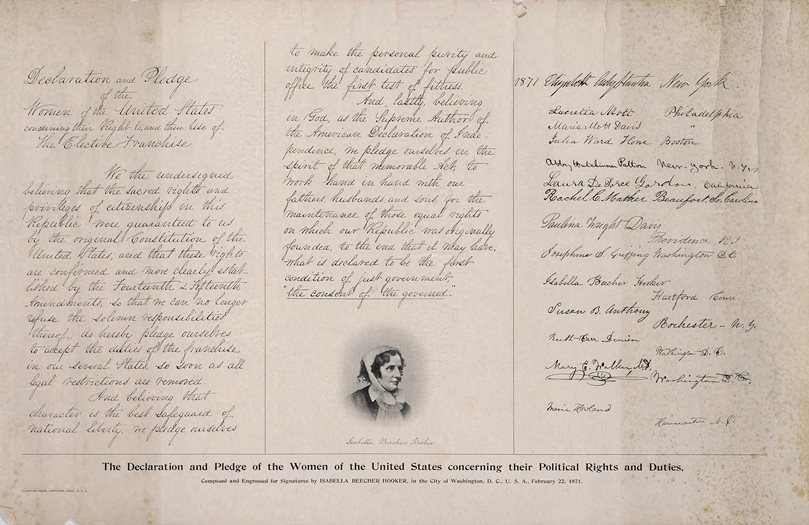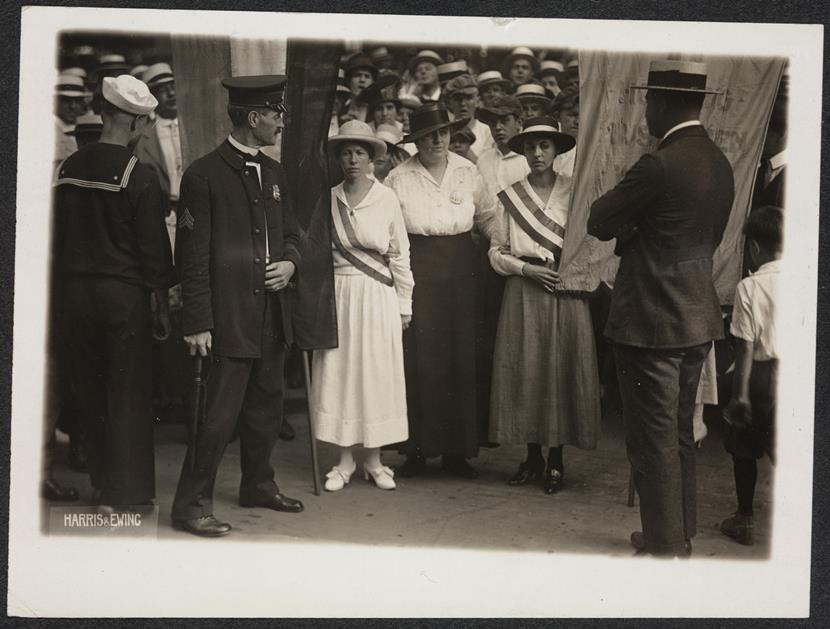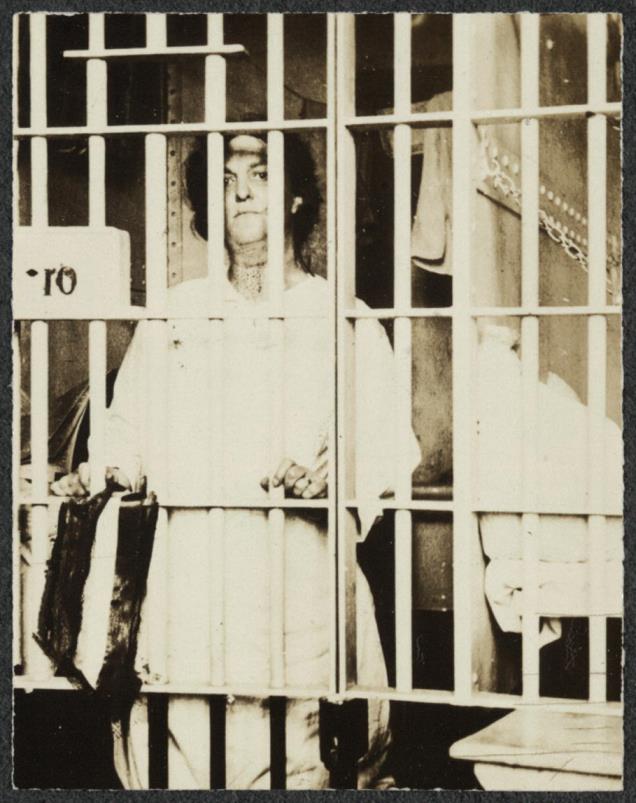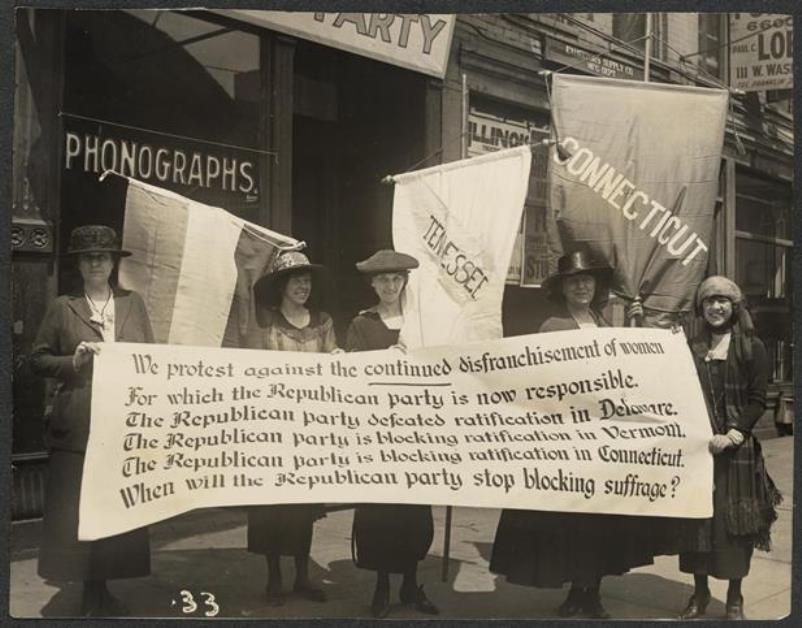by Rebecca Furer for Teach It
TEACHER'S SNAPSHOT
Subjects:
Civil Rights, Reform Movements, Rights & Responsibilities of Citizens, Social Movements, Voting & Suffrage, Women
Course Topics/Big Ideas:
The Struggle for Freedom, Equality, and Social Justice
Grade:
High School
Lesson Plan Notes
The National Woman Suffrage Association (NWSA) argued that together the Fourteenth Amendment and Fifteenth Amendment to the U.S. Constitution actually guaranteed women the right to vote, but the idea was rejected by the Supreme Court in the 1870s, leading to the push for an all new amendment securing women’s right to vote. The proposed Nineteenth Amendment passed the House on May 21, 1919, and the Senate on June 4, 1919. Both Connecticut senators voted against the amendment. Thirty-six state legislatures needed to ratify the amendment; the last of these did so August 18, 1920. Connecticut did not ratify the legislation until September 14, 1920, after the Nineteenth Amendment had already gone into effect.
ESSENTIAL QUESTION
SUPPORTING QUESTIONS
- Who had the right to vote in the United States in 1870?
- What strategies or arguments did supporters of women’s suffrage use to win the right to vote?
- Are the voting rights of traditionally under-represented groups protected in contemporary America?
ACTIVITY
Using SOAPSTone analysis, the Library of Congress Analyzing Primary Sources process (download Teacher’s Guide), or another method of your choice, have students investigate the “Declaration and pledge of the women of the United States concerning their right to, and their use of the elective franchise.”
- Who created this document?
- Who was the intended audience?
- When and where was it created?
- What was going on in the country at the time?
- What was the context?
- What is the subject matter?
- Which sentences or phrases particularly stand out?
- What arguments are being made?
- What does this document make you wonder?
Discuss the questions raised by the document and help students shape them into stronger questions to guide further inquiry. Discuss what sources (both primary and secondary) might help students learn more.
You may then choose to introduce one or more of the later photographs listed above into your inquiry, following investigation of the document. Use a similar process of OBSERVING, REFLECTING, and QUESTIONING to guide students’ exploration and analysis. You can find additional tips in the Library of Congress Teacher’s Guide to Analyzing Photographs and Prints.
Together the document and photographs can help students develop a richer response to the supporting question above (“What strategies or arguments did supporters of women’s suffrage use to win the right to vote?”), as well as to the compelling question.
OPPORTUNITIES FOR ASSESSMENT
- Students will use historic Connecticut newspapers available through the Connecticut State Library Digital Collection or Chronicling America, as well as other primary-source materials found online, to learn more about the arguments posed by both the suffrage and anti-suffrage movements in the early 1900s and the reaction to these arguments in the media. Students will then imagine themselves in 1919 and write a letter to the editor of one of the Connecticut newspapers advocating a position based on evidence gleaned from various primary sources of the time. Additional sets of primary sources relating to national women’s suffrage can be found at:
- Library of Congress: Women’s Suffrage
- National Archives: Woman Suffrage and the 19th Amendment
- Students will research contemporary voter registration and voter turnout data and create a video, billboard design, or social media campaign encouraging a target audience (which they will identify) to register and vote. Here are a few online resources that are available:
- U.S. Census Bureau: Voting and Registration information
- State of Connecticut: Elections Results Archive
- The Center for Information & Research on Civic Learning and Engagement at Tufts University Jonathan M. Tisch College of Civic Life
- United States Elections Project, University of Florida: Voter Turnout
RESOURCE TOOL KIT
Things you will need to teach this lesson:

“Declaration and pledge of the women of the United States concerning their right to, and their use of the elective franchise.” Isabella Beecher Hooker, 1871 – Connecticut Museum of Culture and History
.
In 1871 Isabella Beecher Hooker, an advocate for women’s rights from Hartford, Connecticut, organized the convention of the National Woman Suffrage Association in Washington D.C. This document was written and signed the same year.
You may wish to add one or more of the following photographs to your inquiry investigation:

Arrest of White House pickets Catherine Flanagan of Hartford, Connecticut (left), and Madeleine Watson of Chicago (right), August 1917 – Library of Congress, Prints and Photographs Division, Records of the National Woman’s Party.

Helena Hill Weed, Norwalk, Conn. Serving 3 day sentence in D.C. prison for carrying banner, “Governments derive their just powers from the consent of the governed,” 1917 – Library of Congress, Prints and Photographs Division, Records of the National Woman’s Party.

Party members picketing the Republican convention, Chicago, June 1920 – Library of Congress, Prints and Photographs Division.
Analysis worksheet:

Library of Congress Primary Source Analysis Tool Worksheet
ADDITIONAL RESOURCES
Places to GO
Harriet Beecher Stowe Center: Harriet Beecher Stowe and her sisters Catherine Beecher and Isabella Beecher Hooker all worked for causes they believed in—whether it was abolition, women’s education, or women’s rights. Visit this museum in Hartford to learn more about the Beecher family and how they fought for change.
Connecticut Museum of Culture and History: See the original declaration used in this activity and other materials related to the women’s suffrage movement in the Connecticut Museum of Culture and History’s Waterman Research Center.
Things To DO
Find great educational programs and resources online at the Connecticut Women’s Hall of Fame.
Websites to VISIT
Women’s Rights National Historical Park
National Women’s History Museum: Women on the Web
Articles to READ
ConnecticutHistory.org:
- “Connecticut Suffragists Appeal to the President”
- “19th Amendment: The Fight Over Woman Suffrage in Connecticut”
- “Isabella Beecher Hooker”
- “The Smith Sisters and Their Cows Strike a Blow for Equal Rights”
“These Anti-Suffragette Postcards Warned Against Giving Women the Vote” by Danny Lewis for Smithsonian.com



